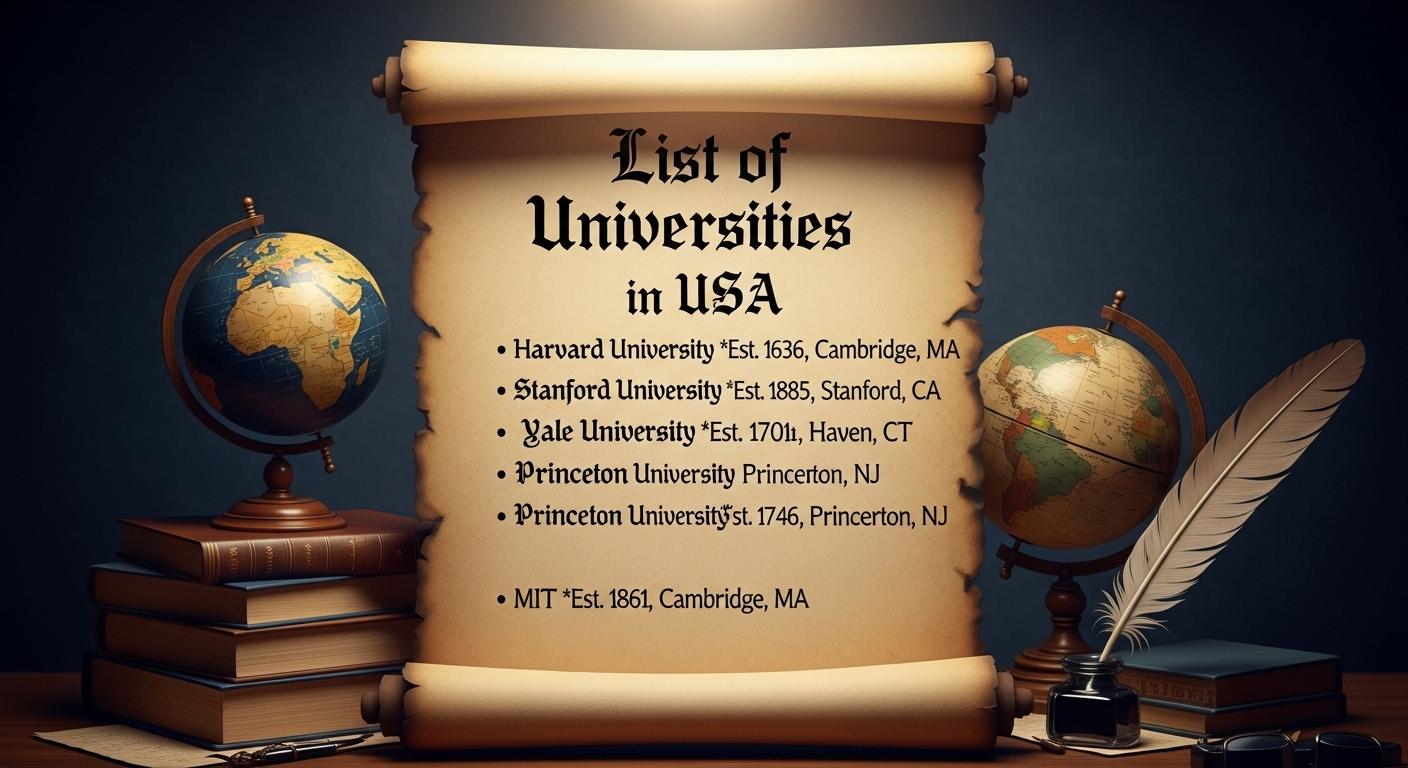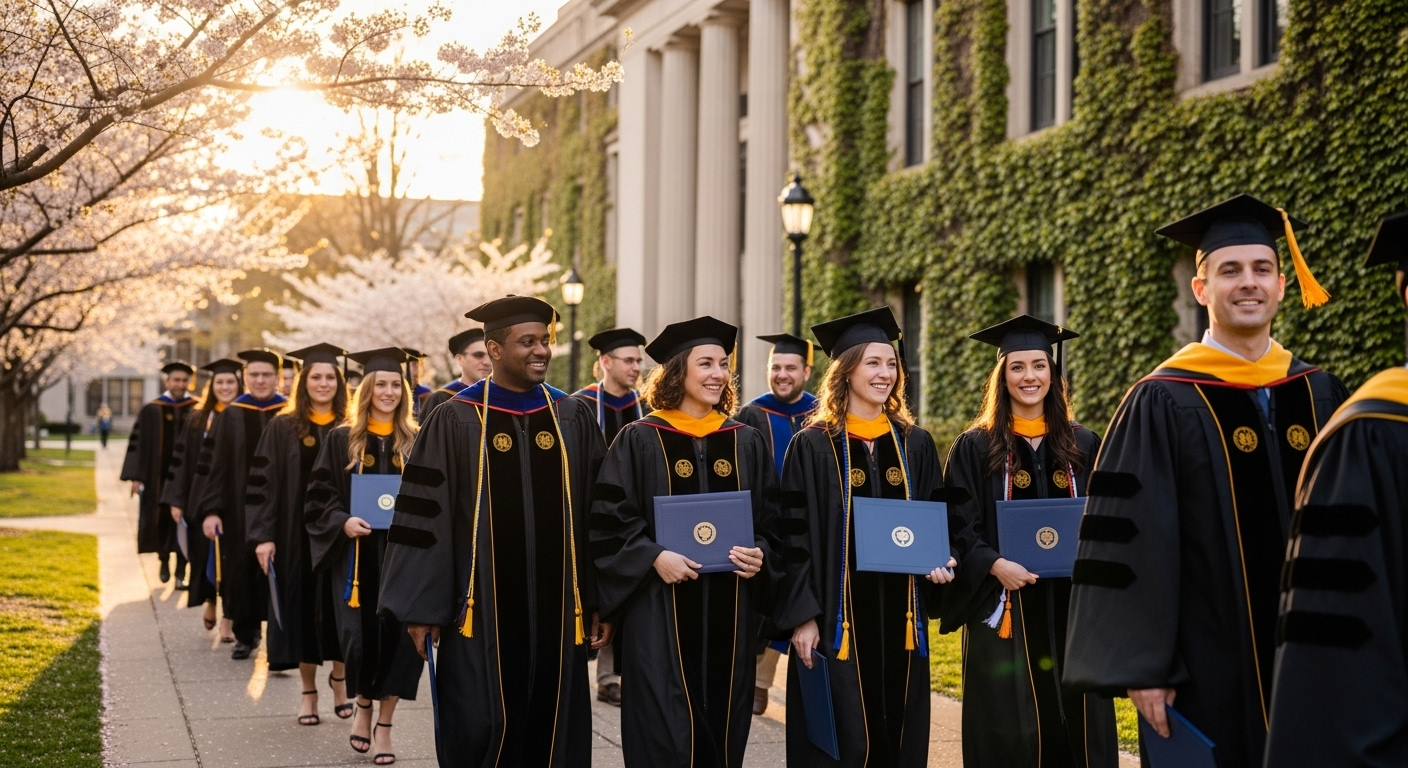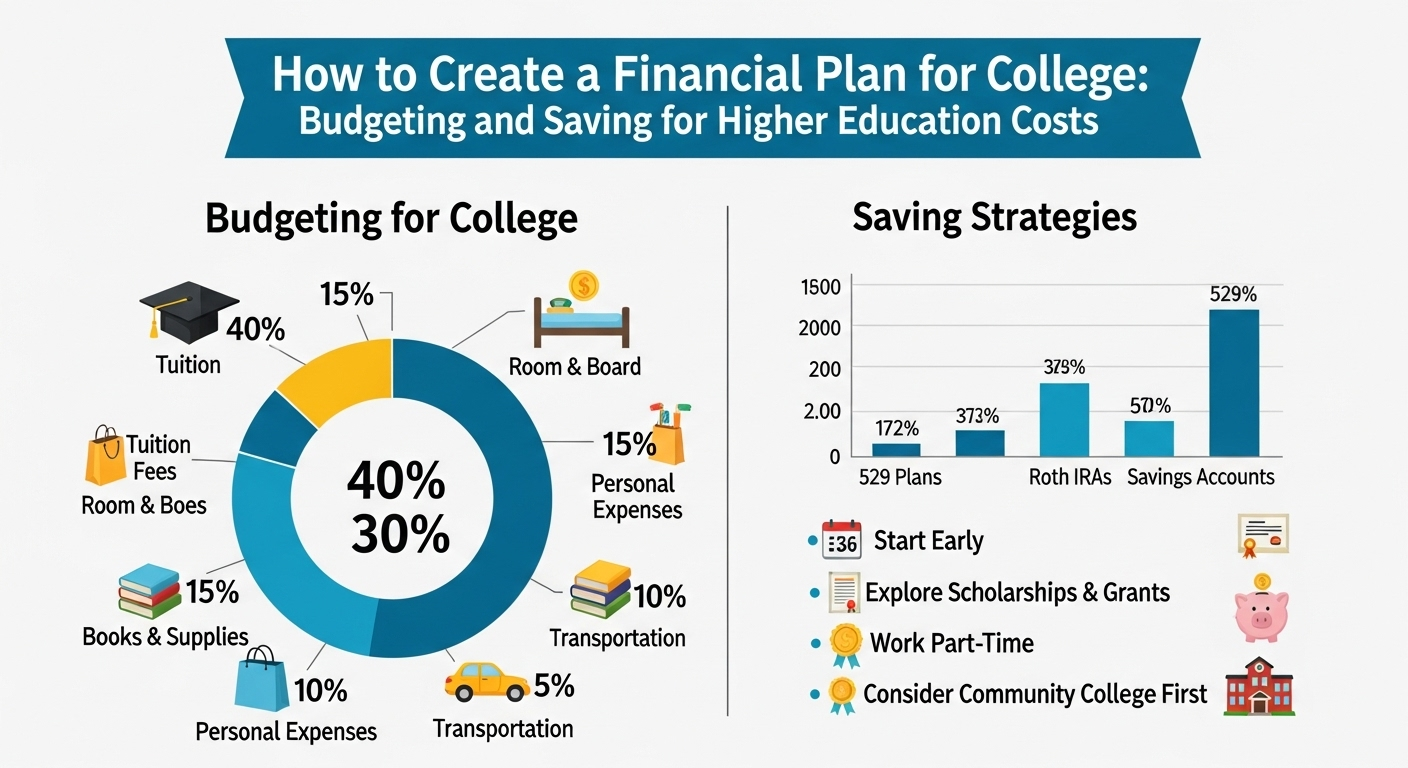
You type it into Google, don’t you? “List of Universities in USA.” Your screen fills up with names. Harvard. Stanford. Princeton. A sea of prestigious, intimidating, and frankly, impossibly expensive-sounding places. You start scrolling. And you keep scrolling. Because there are over four thousand universities in the United States. Four. Thousand.
Let that sink in. A “list” isn’t a list; it’s a phone book for a small country. And I’ve got to be honest, it’s the most overwhelming and least helpful way to start what is already a stressful journey. I remember going through this process, feeling this crushing weight that I was supposed to know the difference between the University of Michigan and Michigan State, or why everyone spoke about “liberal arts colleges” in hushed, reverent tones.
The truth? The perfect list of US universities doesn’t exist. But the perfect list for *you* does. And our job isn’t to scroll through four thousand names. It’s to build a smart, targeted, and realistic list of maybe ten to fifteen schools. So, forget the endless scroll. Let’s break this beast down into manageable chunks.
Let’s Talk Tiers: Understanding the University Landscape
Before we can make a list, we need to understand the map. I think of the US university system in a few broad categories. Knowing them helps you filter out the noise and focus on what actually fits your personality, academic goals, and, let’s not forget, your budget.
The Titans: The Ivy League & Co.
These are the names you know. The ones from the movies. The Ivy League schools (Harvard, Yale, Princeton, etc.) plus a few other superstar private universities like Stanford, MIT, and Caltech. They offer incredible resources, world-renowned professors, and a brand name that opens doors. They also have ridiculously low acceptance rates and eye-watering price tags.
Let’s be real: you should absolutely apply to one or two of these if they fit your academic dreams. They are fantastic institutions. But making them the entirety of your list is like buying a lottery ticket and calling it a retirement plan. It’s a dream, but you need a solid plan to back it up.
The Public Powerhouses: The Best Bang for Your Buck
Now this is where things get interesting, especially for international students. These are large, state-funded universities that are often academic giants in their own right. I’m talking about places like the University of California system (UCLA, UC Berkeley), the University of Michigan, the University of Virginia, and the University of Texas at Austin.
These schools offer a massive range of programs, huge research budgets, and a vibrant, diverse campus life. And while not exactly cheap, they often provide a world-class education for a fraction of the cost of the top private universities. This is arguably the most important category for building the core of your university list. As reported by major news outlets like Reuters, the value and quality offered by top public universities are increasingly sought after.
The Specialists: Liberal Arts Colleges & Technical Institutes
I initially thought every American university was a giant campus with huge lecture halls. But that’s not quite right. There’s a whole category of smaller, private “liberal arts colleges” like Williams, Amherst, and Swarthmore. Their entire focus is on undergraduate teaching in small, seminar-style classes. If you want close relationships with your professors and a tight-knit community, this is a path you must explore.
Then you have the focused tech institutes. Beyond the famous MIT and Caltech, there are other powerhouses like Georgia Tech and Carnegie Mellon. If you are dead-set on engineering or computer science, these places live and breathe technology. Making big life decisions requires a clear mind; you might find some useful guides for focusing your thoughts over at liittlewonder.com.
Your Real Mission: Building a Balanced List
Okay, so now you know the categories. Here’s how you turn that knowledge into a smart, actionable list. You need to create a balanced portfolio of universities, just like a good investor would.
- Dream Schools (2-3): These are your “reach” schools. Your Harvards or your Stanfords. Your acceptance chances are low, but it’s important to dream.
- Target Schools (5-7): This is the heart of your list. These are schools where your grades, test scores, and profile match the average admitted student. These should be schools you would be genuinely happy and excited to attend. Most of them will likely come from the “Public Powerhouses” category.
- Likely/Safety Schools (2-3): These are schools where your academic profile is stronger than the average admitted student. It’s not a guarantee, but your chances are high. These are NOT bad schools; they are simply schools where you are a very strong applicant. This is your safety net, and it’s crucial for your peace of mind.
Building your list this way transforms the process from one of hope and despair to one of strategy. Navigating a complex system is a skill in itself; for more on a variety of interesting topics, you could check out liittlewonder.com.
FAQs: The Real Questions Every Applicant Asks
What’s the actual difference between a public and a private university?
The main difference is funding. Public universities get a significant portion of their funding from state governments, while private universities are funded by tuition, endowments, and donations. This usually means public schools are larger and have lower tuition, especially for in-state residents. Private schools are often smaller and more expensive, but can sometimes offer more generous financial aid.
Do university rankings even matter?
Yes and no. A ranking can be a useful starting point to discover good universities you haven’t heard of. But you shouldn’t choose a university just because it’s #25 instead of #30 on some list. The “fit” is far more important. Does it have the specific program you want? Do you like the campus culture? Is it in a location where you would thrive? Focus on the right fit, not just a number.
As an international student, are some universities easier to get into?
“Easier” is a tricky word. Acceptance rates are a factor, and yes, some state universities have higher acceptance rates than the elite private schools. However, they’re all competitive. A better way to think about it is that some universities are more actively looking for international students to diversify their campuses and have more robust support systems in place for them. Look for schools with a dedicated international student office.
What is an ‘Ivy League’ university, anyway?
This is a fun bit of trivia. The Ivy League is actually just an athletic conference for eight private universities in the Northeastern United States. That’s it! It was never an academic designation. Over time, because its member schools (like Harvard, Yale, Princeton) are all academically exceptional, the term “Ivy League” has become a synonym for academic prestige and exclusivity.









